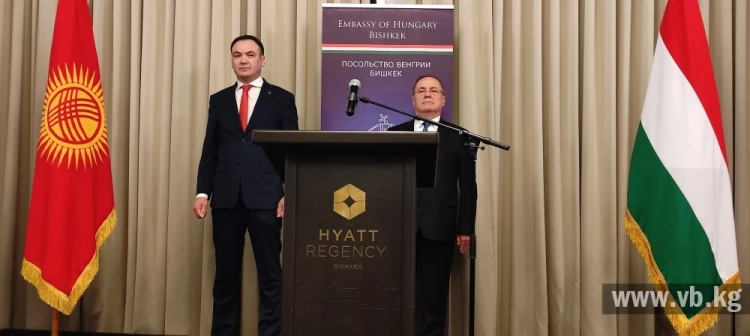
CONCLUSION The Kyrgyz people, stepping from the world of feudal relations into the world of...

The historical and cultural monuments of Kyrgyzstan from the 18th to 19th centuries did not arise...

Personality and History Soviet scientific literature has always shown interest in the problem of...

Everyone has their own happiness We cannot say what a person needs for happiness. But each of us...

The evolution of consciousness - part of the overall process of historical development of humanity...

The ancient Turkic nomads who inhabited the territory of Kyrgyzstan left behind unique monuments —...

“The people... are the first in time, beauty, and the genius of creativity, philosophers and...

FEATURES OF HISTORICAL CONSCIOUSNESS AND SOCIAL BEHAVIOR OF THE KYRGYZ IN THE EARLY 20TH CENTURY...

In the last decade since the birth of an independent state, numerous problems that had been...

Poeticization of Natural Phenomena in the Works of Democratic Akyns Toktogul and Togolok Moldo. A...

Osh — the regional center of the republic, the oldest city in Kyrgyzstan. Through publications of...

Knowledge and understanding of natural processes in which human life takes place is a prerequisite...

The relationship of humans to nature, animals, and plants is determined not only by their natural...

RULES OF DECENCY IN RELATIONSHIPS WITH LIVING NATURE If you didn't grow it, don't take...

When was life flourishing? Even a brief overview of the material culture with a short excursion...

Saymaluu-Tash is a small plateau hidden at an altitude of over 3000 meters among the peaks of the...

The Brilliant Insights of the Talented Scholar - Alexander Natanovich Bernstein In his work...

Class Societies by Social Structure Each type of consciousness, until a certain point, of course,...

The incorporation of Kyrgyzstan into Russia was of great significance not only for the internal...

“Who is not with us is against us” The traditional way of life of the Kyrgyz tribal society began...

The Birth of Kyrgyz Ballet For a century, the land of the Kyrgyz has repeatedly become the arena...

Did the ancient Kyrgyz have ideas about the movement and structure of the Earth's surface?...

“Descendants of Afrasiab” and Ilek-khans In the surviving Eastern written sources, the Karakhanid...

CONCERT ON FEBRUARY 27 AT 18:00, A CONCERT WILL TAKE PLACE AT THE NATIONAL LIBRARY OF THE KYRGYZ...

Seven Phenomena of Happiness! Long ago, in a distant mountain village, there lived a sage. For his...

Integration of Artistic Cultures The international integration of artistic cultures has deepened...

Today, October 23, the Hungarian nation celebrates its National Day. On the eve of this event, the...

FROM THE SPEECH OF THE DIRECTOR OF KYRGYZ SECONDARY SCHOOL NO. 5 IN FRUNZE, COMRADE UMURZAKOV, AT...

Traditional Type of Consciousness of the Kyrgyz In the traditional type of consciousness, the...

The Kyrgyz people, defending their freedom and land, alongside other peoples of Eastern Tian Shan...

Changes in the Cultural Sphere. Independence and the democratic processes occurring in public life...

Deep ancient local traditions in the art of the Kyrgyz can be traced when studying the...

Land resources refer to lands that are systematically used or suitable for use for economic...

How Animals Paved the Great Silk Road “The ‘discoverers’ of the Great Silk Road were animals,” say...

Baatyr, in demand by the era Every nation has individuals whose activities serve as a peculiar...

Identifying the ethnic specificity of etiquette is a rather complex task, for which a large number...

President of the Kyrgyz Republic Almazbek Atambaev met today, November 26, with the Prime Minister...

The bearers of the Bashkir language will be able to familiarize themselves with the masterpiece of...

The Saymaluu Tash area translates from Kyrgyz as “painted stone” The State Natural National Park...

Artistic and Stylistic Range of Young Artists' Works Possessing a gift for painting, most of...

“The task of historical science in Kyrgyzstan is to research and provide a scientifically grounded...

The first representations of people about nature were formed in deep antiquity. As the founders of...

Fifteen-year-old resident of Kyrgyzstan Ermek Turdubekov took first place in the Russian literary...

Tashiev Jumagul Applied artist. Born on January 10, 1956, in the At-Bashinsky district. In 1981,...

Bernsham in the Popularization of the Epic "Manas" During the celebration of the...

The State Historical Museum of the Kyrgyz Republic is one of the largest museums in Central Asia....

The foundation of marital and family relationships among the nomadic population of ancient...

Program of the bike tour and race "Bike Burana" on May 3, 2014....